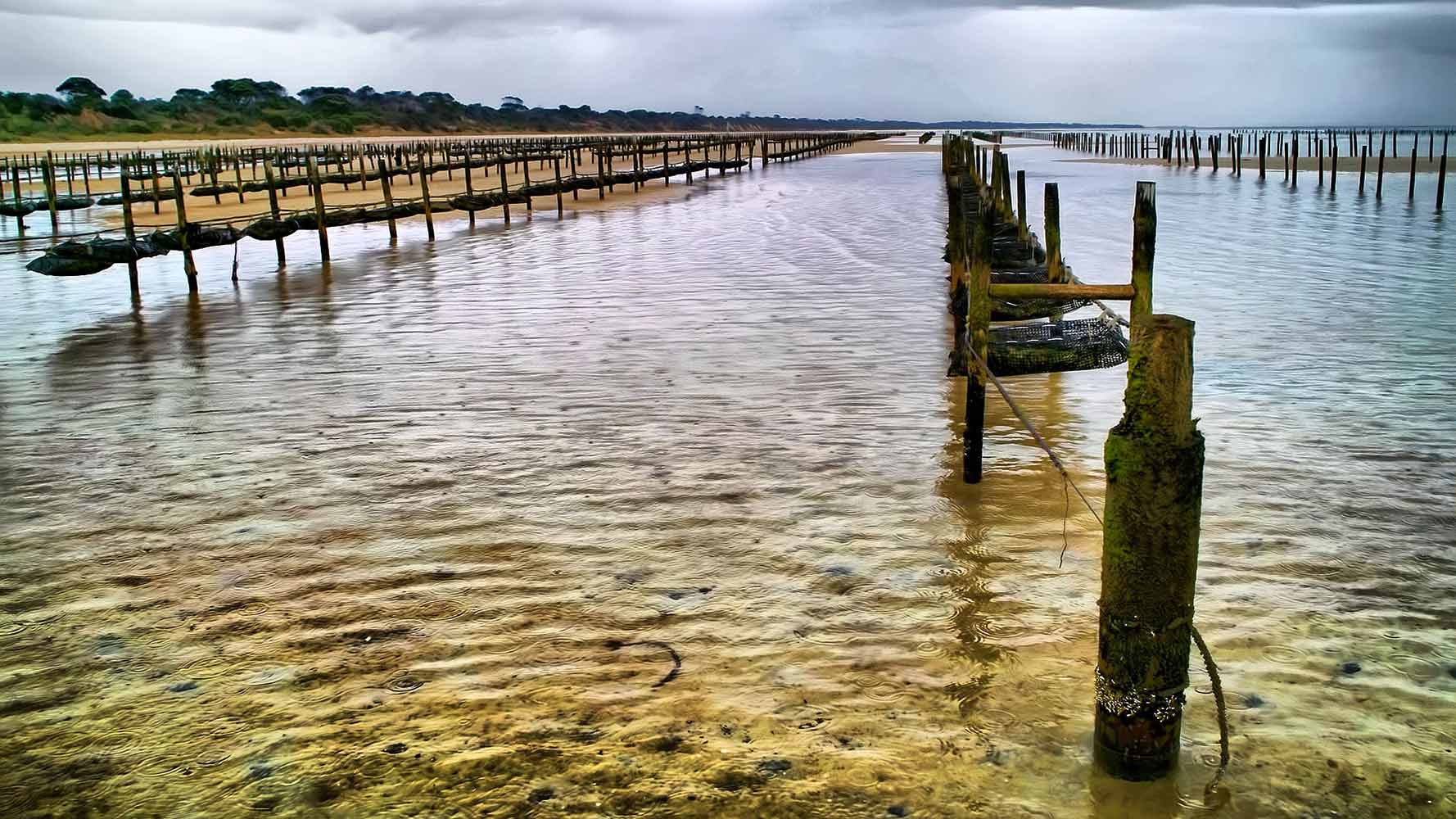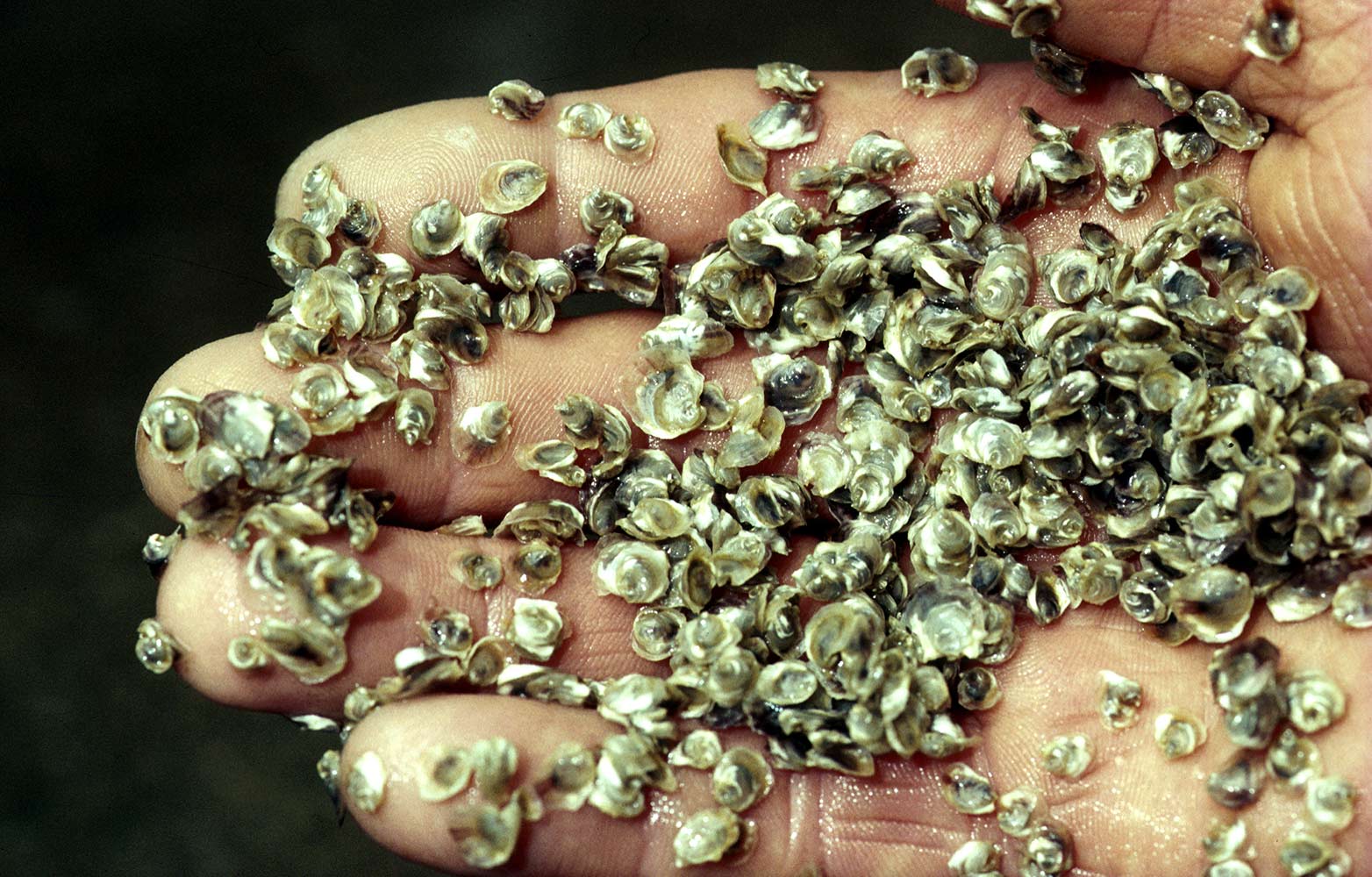You might need to shell out more for Pacific oysters this Christmas
Just as getting the oyster out of its spiky, hard shell can be a tricky process, oyster farming is hard work. Modern equipment and technologies are making the process easier, but there’s still a lot of manual labour in getting those shellfish from the ocean onto your plate. It takes a couple of years for oysters to grow to ‘market’ size, and during those years farmers have to tend to the oysters regularly.
In the wild, oysters like to cement themselves to rocks, and can be overgrown with other oysters. Farmed oysters are produced in hatcheries from larvae that settle on small pieces of shell and continue to grow as individual oysters. The oysters have to be regularly sorted out into different sizes—the bigger ones are sent off to market, the smaller ones go back out in the water to keep growing, and any overgrowth removed. So there’s quite a lot of continual maintenance. And diseases that can wipe out a farmer’s stocks virtually overnight certainly don’t help.

There are two main oyster species that are commercially farmed in Australia: Pacific oysters (Crassostrea gigas) and Sydney rock oysters (Saccostrea glomerata).
Pacific oysters are native to Japan, but are the most commercially farmed oyster around the world. Here in Australia, they’re the predominant farmed oyster in Tasmania and South Australia, but in New South Wales, their production is restricted. Their fast growth rate makes them highly invasive and they can become established in new locations extremely quickly. However, there are a few estuaries in New South Wales where Pacific oysters are well and truly in residence and commercial farming is permitted. Farming of specially-bred sterile varieties is also permitted in some estuaries.
Pacific oysters are great for farming because they grow quickly—they’re usually ready for market between 18 months and 2 years. However, in the past few years, Pacific oysters have suffered from outbreaks of Pacific Oyster Mortality Syndrome (POMS disease). This is caused by micro-variants of a virus called OsHV-1. Only Pacific oysters are affected, and the disease causes widespread death throughout an oyster population. It is a serious problem, affecting commercial and wild Pacific oyster stocks around the globe.
POMs can kill juvenile oysters within days. When a variant of the OsHV-1 virus first appeared in France in 2008, it wiped out 80–100 per cent of the oyster populations where it was found. In the UK, more than 8 million oysters were lost from oyster farms. The virus has since spread throughout Europe, Asia, New Zealand, and an isolated case has been found in California, USA. Here in Australia, it was first detected in the Georges River, New South Wales, in 2010. It has since spread south, making it to Tasmania sometime between March and December 2015. As Tasmania is the home for several hatcheries that provide juvenile oysters to farms in other parts of the country, the arrival of POMS in this state had the potential to destroy the entire Pacific oyster industry in Australia.

Research is underway to breed oysters resistant to POMS, with scientists working with genetically diverse oyster populations to develop strong disease-resistant oysters. Along with testing in the lab, the success is measured by putting the oysters out in water, exposing them to the virus, and seeing how they fare. It’s been found that the occurrence of POMS is highly seasonal, as it is triggered during times of warmer average daily water temperatures.
Other work has investigated the best ways to look after oysters in areas where the disease is present. Researchers found that reducing the time the oysters spent immersed in the water (they live in inter-tidal zones, and so naturally spend some of their time exposed at low tide) by around 2 hours a day resulted in a 50 per cent reduction in oyster mortality. It was also found that mortality patterns were not uniform, with clusters of higher mortality in particular regions within the estuary. Research is also ongoing in Tasmania to investigate the how stress due to different levels of handling and stocking densities can impact on oyster mortality. There are also some water treatment methods that can be effective in reducing mortality within oyster hatcheries.
Even with this encouraging research, mass mortality is still affecting many of the Pacific oyster stocks around the country, and it’s predicted that oysters are going to be on the pricey side this Christmas. Pricey, but safe to eat—the virus that causes POMS does not affect humans.
And don’t despair entirely, don’t forget about the other oyster species you’re also likely to encounter at your local fish shop—the native Sydney rock oyster.





